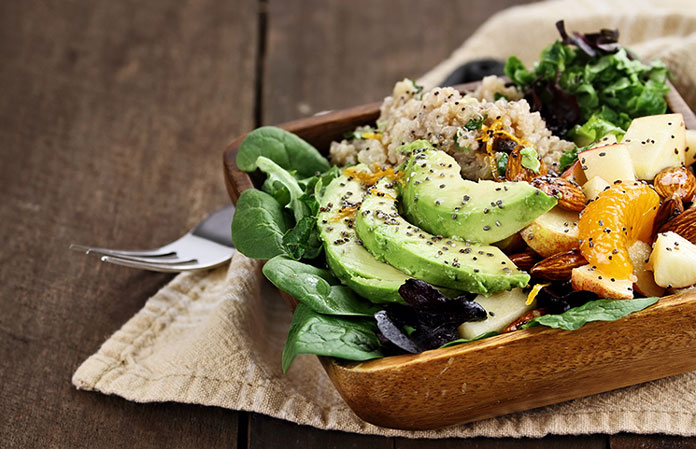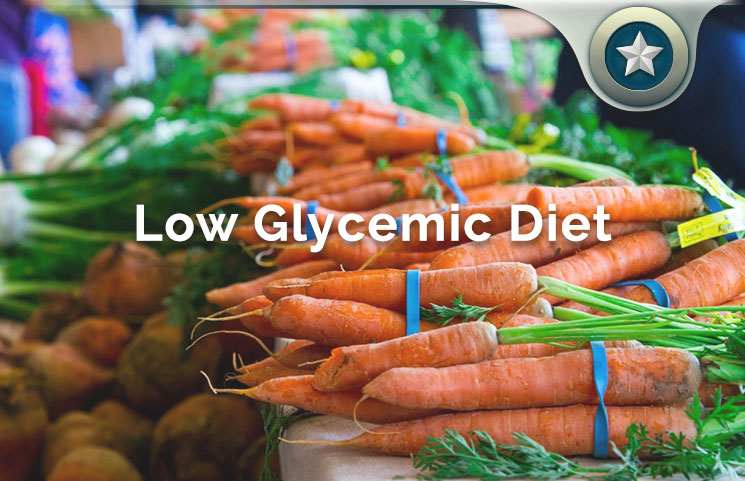Healthy diets and lifestyles have become a prime concern for the modern generation. In light of increasing obesity, diabetes, and other sedentary lifestyles ailments and diseases, more attention has been shifted to creating awareness and helping individuals achieve healthy practices.
The search for low glycemic diets, for instance has only shot up over the past few years as more people begin to cautiously pick their food options to remain healthy and keep various disorders at bay.
The low glycemic diet has several benefits that many people are already aware of. From weight loss to heart health, boosted immunity, enhanced hormone and glandular function, and diseases prevention and management, establishing a low glycemic diet may just be what you need to realize your health goals and resolution. But what does it really entail?
What Is A Low Glycemic Diet?
The term low glycemic diet is often used interchangeably with low-carb diets, although the two are slightly different. Carbohydrates remain the basis for both, but a reference to the word ‘glycemic’ is based on the glycemic index. It is a tool that is used to evaluate how a given food will affect the blood glucose (sugar) levels.
The glycemic index is defined as a measure for the glucose-raising potential of the carbohydrate found in a given food. During digestion, carbohydrates are broken down to glucose and sent to the cells to provide energy or stored in fat cells as glycogen for future use when there is already excess in the blood.
The release of glucose in the blood stream immediately triggers the production of insulin to balance blood glucose. Glucose is the simplest carbohydrate and, when consumed, it is quickly broken down and sent to the blood stream. It is therefore used as the benchmark and has a glycemic index of 100.
Other carbohydrates may take longer to digest and break down. Because of this, all carb-containing foods can be classified as having a high GI(glycemic index), a moderate GI, or a low GI on a scale of 0 to 100. The numbers for this rank as follows:
- 70 – 100 – High Glycemic Index
- 50 – 70 – Moderate Glycemic Index
- 0 – 50 – Low Glycemic Index
GI is a very important measurement tool. It determines how fast a given carbohydrate will be broken down into glucose. Highly processed sugars such as soda, bread, and ice cream are often broken down very quickly, causing a sudden spike in blood glucose level and increasing the levels of insulin in blood. This phenomenon is associated with pre-diabetes and type 2 diabetes.
It is also linked with moodiness, increased cravings, and short-lived energy levels. Raw vegetables and whole grains on the other hand will take longer to digest and break down. This provides a gradual increase in blood sugar necessary for optimal release of insulin, which is tasked with distributing sugar throughout the body or storing it up for later use.
Choosing a low glycemic diet can help you open up to a wide range of healthy foods that will deliver the needed nutrition and keep you energized throughout the day.

Glycemic Load
Glycemic load is another measure that is very important when selecting a low glycemic diet for your health goals. GL factors both the glycemic index and also how the food will impact blood sugar when taken in given portions.
While glycemic index measures per 100 gram serving, glycemic load seeks to identify what portions of the food impact blood sugar. Some foods and vegetables may have a high glycemic index, but register very low glycemic load. It is therefore the best way to determine if a given food is healthy or not when taken in given portions as part of a whole meal. The glycemic load scale is as follows;
- 20 and above – High Glycemic Load
- 11 – 19 – Moderate Glycemic Load
- 0 – 10 – Low Glycemic Load
Benefits Of A Low Glycemic Diet
The benefits of establishing a low glycemic diet are quite obvious and straightforward. Carbs are the number one culprit in most dietary conditions like obesity, diabetes, and cardiovascular diseases. Eating only enough sugar to sustain healthy bodily functions without drastically changing the release of insulin is the ultimate priority.
Avoiding high glycemic foods such as highly processed ingredients, sodas and processed beverages, too much alcohol, empty calories, and fast foods can help you establish a plan that gives you all the necessary vitamins, nutrients, and minerals.
Low glycemic diets deliver long-term energy usable throughout the day and minimize craving and mood swings associated with high sugar foods. What’s more, this diet supports heart health and immunity as it prevents insulin hikes and excess weight.
Some of the clear benefits of a low glycemic diet include:
- Increased energy that lasts the whole day
- Weight management (prevents obesity)
- Improved cardiovascular function
- Disease prevention (diabetes, heart diseases, strokes)
- Balanced diet – allows you to eat foods that are healthy for your body
Top Foods For Low Glycemic Diet
A low glycemic diet will be comprised of more complex carbs than simple carbs. Simple carbs include fructose, glucose, and maltose that are made up of one or two-chain carbohydrates.
It takes the body a short time to break these carbs down. Desserts, candy, jam, processed grains, and soda all have simple carbs. However, not all simple carbs are unhealthy, as options such as apples, peaches and strawberries are still simple carbs but can be incorporated into healthy diets.
Complex carbs, on the other hand, have more chains of carbohydrates and take much longer to break down. Low carb foods like meat, fat, oils, and fish are considered low glycemic. Complex carbs include beans and legumes, various vegetables, bran, oatmeal, and wheat germ, among many more.
Here is a list of the top 9 low glycemic foods you can incorporate into your low glycemic diet plan:
1. Non-Starchy Veggies
This group includes vegetables like lettuce, spinach, broccoli, onions, green beans, leafy greens, artichokes, and peppers. These are veggies that contain very low glycemic indices (usually 1-7). Incorporate at least one vegetable within each meal.
2. Seeds And Nuts
You can choose nuts and seeds with a low glycemic index (1–17) such as almonds, flax seeds, chia seeds, walnuts, and pumpkin seeds. Avoid high GI seeds and nuts like cashews.
3. Beans And Legumes
Small amounts (about half a cup per serving) of beans and legumes will not interfere with your low glycemic diet. They usually have low GI values between 2-13 and also aid digestion.
They also improve nutrient absorption once they have been soaked and sprouted. An ideal start is soybeans, which have the lowest GI in this category. Chickpeas are higher, but can be consumed occasionally in small portions.
4. Fermented Dairy And Yogurt
Most dairy products have very low glycemic indices, ranging between 1 and 5. Those with higher fat content have the lowest GI scores. Choose plain yogurt (unsweetened), traditionally made cheese, or raw whole milk. Organic and raw varieties are always best.
5. 100% Whole Grains And Ancient Grains
Most pure whole grains register between 10 and 17 in the glycemic load scale. Brown rice, steel-cut oats, granola, muesli, sprouted grain breads, and whole wheat pastas all support your low glycemic diet.
You can consider other minimally processed grains, but make sure you eat moderate portions (1/2 cup for uncooked and less than 1 cup for cooked). Just like beans and legumes, grains will improve digestion and make it easier to absorb nutrients.
6. Fresh Fruits
Fruits and vegetables have always been a component of healthy diets. Some fruits may register a high glycemic index but have a very low (sometimes 0) glycemic load, meaning they are still healthy. Fresh fruits have a GL ranging between 4 and 14.
Choose fresh organic fruits like apples, berries, cherries, and citrus fruits. You can have up to 3 servings of fresh fruits per day. It is recommendable to include fruits during the most active periods of your schedule.
7. Healthy Fats And Oils
Pure fats and oils register 0 GI and GL, as they do not contain any carbohydrates. Choose healthy fats like virgin coconut oil, extra-virgin olive oil, and MCT oil. You can also consider some fats than contain carbs like chia seeds, flax seeds, and almonds.
Although they have some carbs, they are still low in GI and GL, making them ideal for your healthy diet.

8. Healthy Quality Protein
Like pure oils, animal proteins often register 0 GL and GI. Those that contain carbs have so little that it does not count. Examples of healthy quality protein include free-range eggs, lamb and beef (grass fed), wild fish such as salmon, cage-free eggs, raw dairy products like yogurt and cheese, and pasture raised poultry animals.
9. Acidic Foods
Studies have shown that acidic components can help lower the glycemic index of certain foods. These include various combinations such as dressings and salads that contain vinegar, vegetables with lemon juice, cereals with fermented yogurt, and apple cider vinegar with smoothies.
Low Glycemic Diet Review Summary
There are several options within the low glycemic diet, and it does not have to be restrictive or overwhelming. Simply keep your options simple and watch out for the portions you take.
Take note of some of the bad food items that you need to avoid at all cost and find better alternatives. The key to establishing a healthy low glycemic diet starts with understanding what you can eat regularly and what to avoid.
As we have seen, not all foods with a high GI are unhealthy. It is therefore important to review your options and make a list of the “BAD” food sources to try and reduce their intake as much as possible. If you are allergic to some of the recommended foods, you can always find alternatives that are just as nutritious and delicious.









